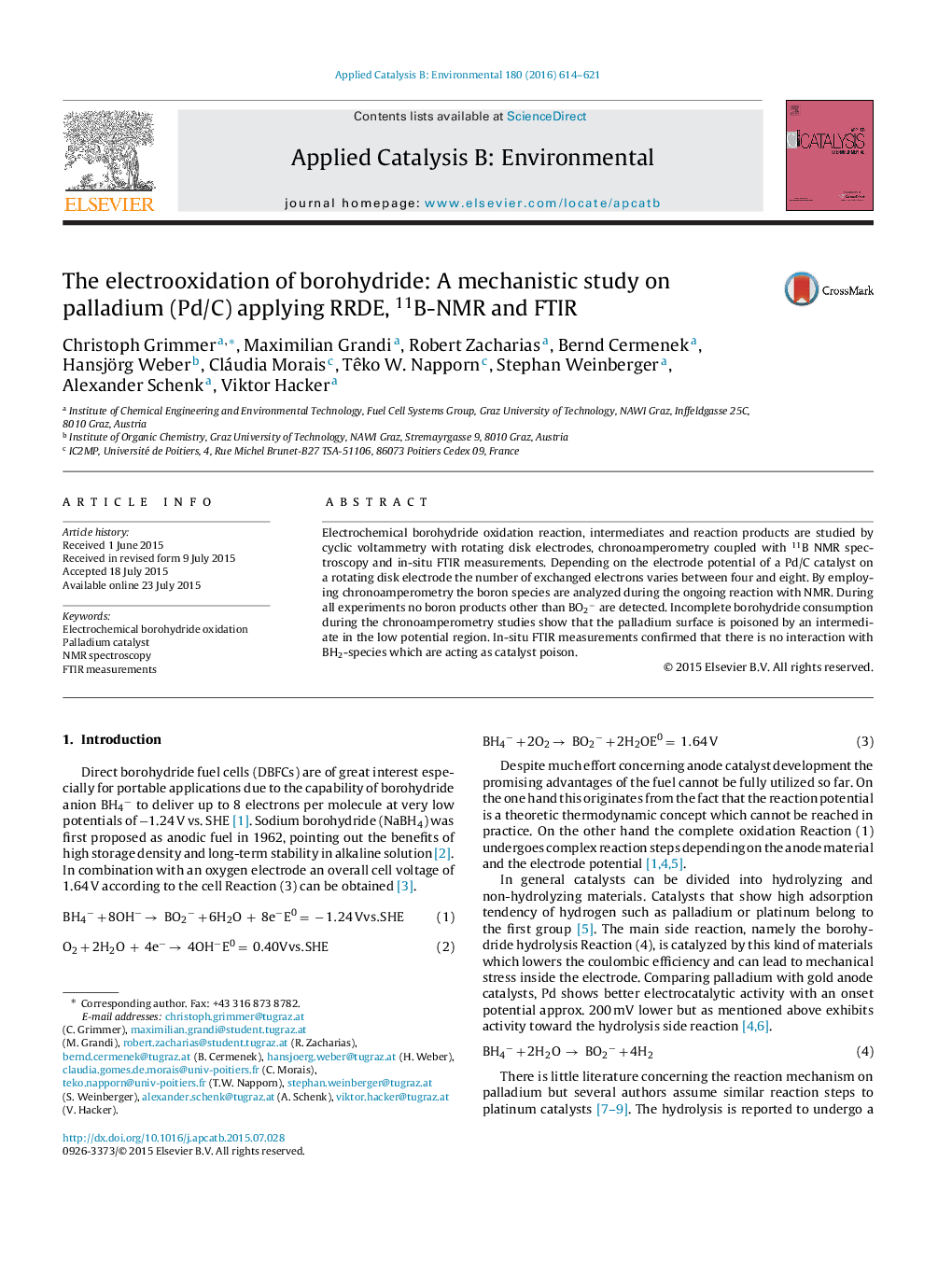| Article ID | Journal | Published Year | Pages | File Type |
|---|---|---|---|---|
| 45280 | Applied Catalysis B: Environmental | 2016 | 8 Pages |
•Pd/C catalyst investigations for direct borohydride fuel cells.•Mechanistic study employing RRDE, 11B-NMR and in-situ FTIR.•Potential depending 4 and 8 electron transfer in hydrodynamic conditions.•Poisoning effect of BH2-species in low potential region.
Electrochemical borohydride oxidation reaction, intermediates and reaction products are studied by cyclic voltammetry with rotating disk electrodes, chronoamperometry coupled with 11B NMR spectroscopy and in-situ FTIR measurements. Depending on the electrode potential of a Pd/C catalyst on a rotating disk electrode the number of exchanged electrons varies between four and eight. By employing chronoamperometry the boron species are analyzed during the ongoing reaction with NMR. During all experiments no boron products other than BO2− are detected. Incomplete borohydride consumption during the chronoamperometry studies show that the palladium surface is poisoned by an intermediate in the low potential region. In-situ FTIR measurements confirmed that there is no interaction with BH2-species which are acting as catalyst poison.
Graphical abstractFigure optionsDownload full-size imageDownload as PowerPoint slide
